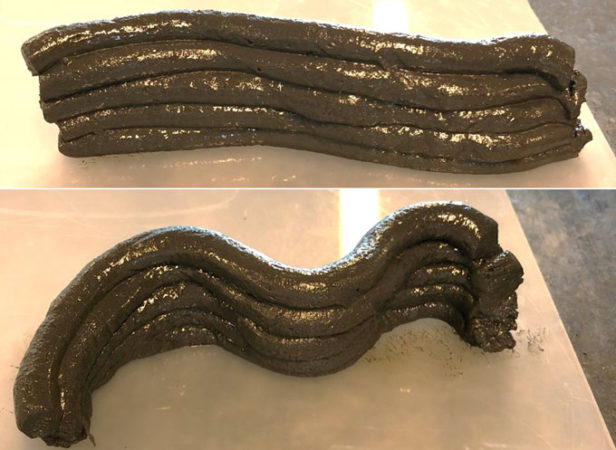Future astronauts could make lunar buildings out of moon dust and pee.
That’s the suggestion of chemist Anna-Lena Kjøniksen and her colleagues, who made a cement from urea — a major component of urine — and faux lunar soil.
When humans take up long-term residence on other planets or the moon, they will need to pack light, in part because shipping materials from Earth is expensive. NASA has estimated that every pound of material sent into orbit around the Earth costs around $10,000.
Tapping into local resources could keep costs down. Researchers have suggested using lunar soil to make concrete or cement to 3-D print dwellings for astronauts (SN: 2/21/13). But most cement recipes require a lot of water, which is scarce on the moon and awfully heavy to blast into space (SN: 4/15/19).
On Earth, adding a chemical called a superplasticizer to a cement mix reduces the amount of water needed by keeping a drier mix from getting too crumbly, while leaving it flexible enough to be used in a 3-D printer. But most superplasticizers are organic compounds, also in short supply on the moon, says Kjøniksen, of Østfold University College in Halden, Norway.
Then it hit her. “I was thinking, what’s available on the moon? If you add humans, then what do you have available?” she says. Maybe human waste could turn into something useful.
Kjøniksen had previously used urea to make plastic mixtures less viscous. Urea breaks hydrogen bonds between molecules, reducing friction and letting the molecules slide past each other more easily. She’d never heard of someone using it in cement, “but I thought it was worth a try.”
A silica and aluminum oxide powder — a stand-in for lunar dust — is the main ingredient in Kjøniksen’s cement. Its chemical content is similar to fly ash, the main component of common cement mixtures, but with larger and more crystalline grains. The team mixed that powder with powdered urea bought from a chemical supply company, not distilled from real urine, along with some water to make the cement. Compared with two other superplasticizers used in construction on Earth, “the urea worked very well,” Kjøniksen says.
 Scientists 3-D printed these miniature walls with a cement containing urea — the second most abundant compound in human urine — and simulated lunar dust. Future astronauts could use a similar mixture to build their own habitats, the researchers say.© S. Pilehvar, ESA
Scientists 3-D printed these miniature walls with a cement containing urea — the second most abundant compound in human urine — and simulated lunar dust. Future astronauts could use a similar mixture to build their own habitats, the researchers say.© S. Pilehvar, ESA
The mixture held its shape under light weight and withstood temperature changes. Extruding the cement through a tube and stacking several layers on top of each other using a 3-D printer made a tiny, stable wall, the team reported in the Feb. 20 Journal of Cleaner Production.
Kjøniksen plans to test the cement in more extreme temperatures and in a vacuum chamber that mimics the moon’s lack of atmosphere. Then, the next step would be scaling the wall up to a more realistic size. She also wants to investigate whether future astronauts would have to purify urine, or if they could use pee in cement directly.
In real life, making urea cement will probably be more complicated than just peeing in a bucket, says materials scientist Belinda Rich of the European Space Agency in Noordwijk, the Netherlands, who was not involved in this study but is working with Kjøniksen and colleagues on follow-up experiments. But overall, making cement with urea on the moon could be practical, she says.
“It sounds like such a daft idea,” Rich says. “But here we are — it works.”



